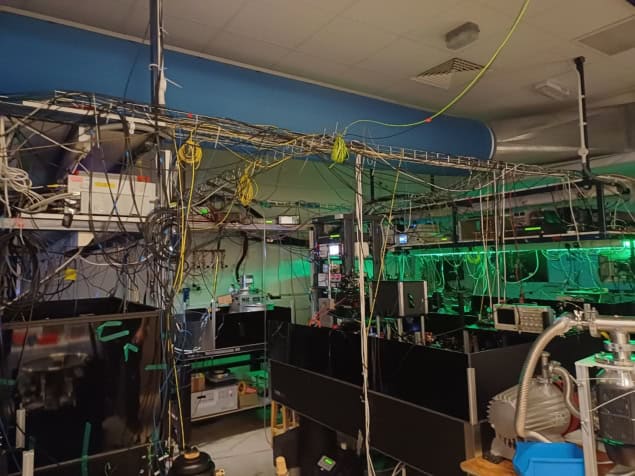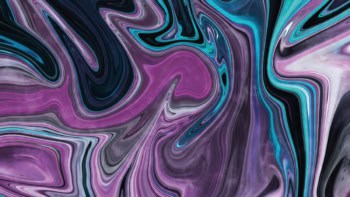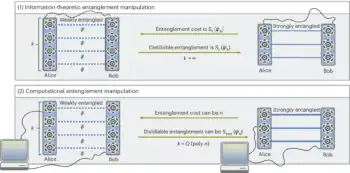
Earlier this year, the start of the Paris Olympics was marked by the ceremonial relay of the Olympic torch. You’ll have to wait until 2028 for the next Olympics, but in the meantime there’s the International Year of Quantum (IYQ) in 2025, which also features a torch relay. In keeping with the quantum theme, however, this light source is very, very small.
The light source is currently on tour around 12 different quantum labs around Europe as part of IYQ and last week I visited the Cavendish Laboratory at the University of Cambridge, UK, where it was on stop eight of what’s dubbed QuanTour. It’s a project of the German Physical Society (DPG), organised by Doris Reiter from the Technical University of Dortmund and Tobias Heindel from the Technical University of Berlin.
According to Mete Atatüre, who leads the Quantum Optical Materials and Systems (QOMS) group at Cambridge and in whose lab QuanTour is based, one of the project’s aims is to demystify quantum science. “I think what we need to do, especially in the year of quantum, is to have a change of style.” he says. “So that we focus not on the weirdness of quantum but on what it can actually bring us.”
Indeed, though it requires complex optical apparatus and must be cooled with helium, the Quantour light source itself looks like an ordinary computer chip. It is in fact an array of quantum dots, each emitting single photons when illuminated by a laser. “It’s really meant to show off that you can use quantum dots as a plug in light source” explains Christian Schimpf, a postdoc in the Quantum Engineering Group in Cambridge, who showed me around the lab where QuanTour is spending its time in England.
The light source is right at home in the Cambridge lab, where quantum dots are a key area of research. The team is working on networking applications, where the goal is to transmit quantum information over long distances, preferably using existing fibre-optic networks. In fibre optics, the signal is amplified regularly along the route, but quantum networks can’t do this – the so-called “no-cloning” theorem means it’s impossible to create a copy of an unknown quantum state.
The solution is to create a long-distance communication link from many short-distance entanglements. The challenge for scientists in the Cambridge lab, Schimpf explains, is to build ensembles of entangled qubits that can “store quantum bits on reasonable time scales.” He’s talking about just a few milliseconds, but this is still a significant challenge, requiring cooling close to absolute zero and precise control over the fabrication process.
Elsewhere in the Cavendish Laboratory, scientists in the quantum group are investigating platforms for quantum sensing, where changes to single quantum states are used to measure tiny magnetic fields. Attractive materials for this include diamond and some 2D materials, where quantum spin states trapped at crystal defects can act as qubits. Earlier this year Physics World spoke to Hannah Stern, a former postdoc in Atatüre’s group, who won an award from the Institute of Physics for her research on quantum sensing with hexagonal boron nitride, which she began in Cambridge.
I also spoke to Dorian Gangloff, head of the quantum engineering group, who described his recent work on nonlinear quantum optics. Nonlinear optical effects are generally only observed with high-power light sources such as lasers, but Gangloff’s team is trying to engineer these effects in single photons. Nonlinear quantum optics could be used to shift the frequency of a single photon or even split it into an entangled pair.
When asked about the existing challenges of rolling out quantum technologies, Atatüre points out that when quantum mechanics was first conceived, the belief was: “Of course we’ll never be able to see this effect, but if we did, what would the experimental result look like?” Thanks to decades of work however, it is indeed possible to see quantum science in action, as I did In Cambridge. Atatüre is confident that researchers will be able to take the next step – building useful technologies with quantum phenomena.
At the end of this week, QuanTour’s time in Cambridge will be up. If you missed it, you’ll have to head to University College Cork in Ireland, where it will be spending the next leg of its journey with the group of Emanuele Pelucchi.



